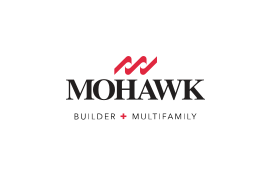Frequently Asked Questions
Custom means we build it your way, with your design layout, exterior elevation look, and style. Custom is not necessarily synonymous with expensive. We can build a custom home with a basic spec level at a very low cost. Custom homes are one of a kind, designed for the way you live, built to endure the test of time, designed, shaped the way you want to fit your lot perfectly.
First, determine the building envelope around any critical areas (Environmental buffers for wetlands/slopes, etc.) and ensure the home is sufficiently set back away from the wellhead radius (as determined by your local building jurisdiction) and septic drain field. Decide on a home location and directional orientation. Then determine any slopes or grades that would change the foundation requirements. This will determine what kind of foundation you need and the shape of the house. Then we discuss access points and the approach angle for the driveway and garage. We take into consideration views from the windows, and the layout is designed around these elements. There are other starting controls, but this is the basic way to start a custom build. Then contact Diggs to take it from there.
Yes, 2-year Mechanical, 10-year structural, and a 1-year builders’ warranty with an 11-month post-construction walk-through to address any minor construction defects during the first 11 months.
No, sorry. Our homes are all custom homes on privately owned land. We typically have several homes you can drive by and look at while under construction; however, many of these properties are on acreage, down long private driveways. Once the homes are completed, we do not give access to homeowner’s addresses for privacy purposes. We have videos and pictures of many homes that we have completed and are currently under construction.
Yes, you can with homes currently under construction on a case-by-case basis, but we will need to get the owner’s permission to do so. Completed homes are not available to walk as these are private residences, often down a long private road. We respect our homeowner’s privacy and will do the same for you once you move in.
Designing plans from scratch can take 30-60 days, Engineering can take 30-60 days. Permitting can take 45-90 days based on the jurisdiction. Once Diggs Pours the foundation, a typical build is 5-6 months. Add extra time if there is snow or heavy storms.
Land
Absolutely! Having our boots on the ground is an essential part of ensuring a successful build. This is a free service.
Diggs offers a turn-key home build for those homeowners who want a hands-off approach. We will either refer you to an individual contractor to do this work for you, or Diggs can manage the preconstruction items for a fee. This service is based on Diggs availability and scheduled workload along with permitting jurisdictions. In general, the more work you do as the homeowner, the more money you will save.
Yes, Diggs is affiliated with Landcor and Realty10x; we can help you find land along with a preliminary feasibility study at no cost to you. No real estate commissions and no fees for buying land with Diggs. Our referred brokers are licensed in the state of Washington and registered agents with the MLS (Northwest Multiple Listing Service).
Yes, we can. The ideal lot is a flat lot with no more than 4-5′ of slope under the building foundation. We can create height extension foundation stem walls and or pony walls to level the house in combination with site development grading. If the lot has a more severe slope, we can build a daylight basement and or hire a company to hammer in pier piles as needed.
Designing Homes
Track A is a stock plan, track B is a structurally modified stock plan, and track C is a full custom.
Yes, as long as they are a plan sale company. Most home builders do not sell their plans. However, architectural websites that sell home plans do.
As many as you want. You will pay for the design time and the material cost plus a builder margin and tax. If the plan changes on a track b gets too extensive, the home designer may recommend we go with a track C custom, so the home is designed to match the intent versus a plan being too cut up.
We charge $1,000 upfront to engage Diggs’ services. This starts after the free initial consultation. Once you decide you want Diggs to be your home builder, we will prepare a contract proposal which identifies our entire scope of work. We will then help you with you land pre-feasibility, home selection, home design or re-design, architectural modifications, engineering, construction selections, personal selections, and professional plan take-offs and estimating and prepare a final contract to build. Once we start construction, we get paid as we build the home and complete the work in phases or draws.
It all starts with the land and the land requirements. The land will tell you what your foundation requirements are and the shape of your home. We can help with this by looking at the land and studying topography, well radius and septic design along with critical areas. Then we can give you a rough ballpark estimate before spending money on home design. To get an accurate number a home needs to be fully designed and engineered, and then we have a quantitative material take-off completed and send the plans to our subcontractors and suppliers for a hard bid. Once we have engineered plans, this process takes approximately 30 days, and the bid is good for 30 days from delivery.
Although Diggs showroom offers some countertop samples, flooring, plumbing, and lighting, all selections will be made at a professional showroom with hundreds of not thousands of selections. You will have an appointment with a designer/consultant that will assist you in your selections and colors.
Any listed prices represent the home being built and constructed based on the Signature Specifications as listed on our website. This includes a fully constructed home from foundation to keys, including painting and cleaning. What is not included are the “Homeowner responsibility items” as indicated in the Signature Specifications form. Additonal work can be added for an additional fee and will be added to the cost to build estimate as requested.
There are a couple of things to consider here. First off, our online prices are Preliminary Estimates which are based on whatever available renderings or photos you see online. If the renderings show a mix of lap siding, board and batten, and shake panels, then that’s what we go off of, unless otherwise directed by the customer. Preliminary Estimates are calculated using our Preliminary Estimating software and consist of historical data that we have on the prices of each aspect of the home but do not include hard quotes or bids, as we don’t have fully drawn plans to send out for quotes/bids at this point. Once we have fully engineered plans, we send those out for actual hard quotes. Those plans should have all architectural details, including siding, etc, drawn as desired by the homeowner so that we can price the home specifically for what the customer wants, which may differ from the original renderings. We gather the “wish list” of each and every architectural detail from our customers in a Pre-Design meeting to streamline the design process and protect the client’s dreams from misinterpretation and confusion.
So with that said, the preliminary estimated pricing that you see online reflects the details on the renderings, as seen online. Once a customer fully approves the architectural plans, we have them engineered, and as soon as we get the engineering back, we begin building the actual cost-to-build estimate. The approved architectural plans take the place of original renderings, which are no longer relevant. All pricing in the future is based on the architectural plans and the customer’s selections.
To answer the question about the price of the various types of siding, here is a basic breakdown. Lap siding is the least expensive, Board and Batten siding is approximately 15% more than Lap, and Hardi Shake panel siding is about 15% more than Board and Batten. Smooth panel, Cedar, Metal, and other applications are also available and would be priced accordingly if shown on a rendering, with Cedar and Metal being the most expensive out these options.
Whatever siding ends up on the architectural plans is what is quoted in the final cost-to-build estimate and installed on your home. As stated before, the original renderings are obsolete once we have approved architectural plans, and an actual cost-to-build estimate will replace preliminary estimates with hard quotes and bids. So, you could increase or decrease the overall price by what you decide you want on your architectural plans during the Pre-Design meeting. In general, changing accent features in the siding details is usually not a huge needle mover in the grand scheme. Typically, the cost of having siding accents on a home adds more in value than it does in price.
Financing
There are a few options in this scenario. This is a lender question, but basically, you will either need to qualify to own both homes, rent the home, or sell the home. If you rent the home, you will need to talk with the lender about the rental amount received based on what they will give you credit for (they typically give you 75% of the rent amount). You will need to qualify for the new home to the existing home payment minus a 75% of the collected rental amount. You can sell the home and rent or live in a trailer while the home is under construction. Some people also take a heloc loan, or an alternative cash-out refinance, to build the home in full or in part if you have sufficient equity.
Typically, no, sorry. Construction loans are special loans originated by specific lenders. 97% of banks that give mortgages do not give construction loans. Additionally, Diggs needs to be approved by the bank just as the homeowner does. It is much more difficult for builders to get approved at various different banks as we need to CPA prepared/updated books, records and taxes along with lengthy interviews with our suppliers and subcontractors. Also, understanding the construction loan documents and construction inspection, holdbacks, and draw nuances of different lenders is very time consuming and difficult. It is critical that Diggs gets reimbursed for our out-of-pocket expenses exactly when we need to in order to pay our bills and release any liens so we can go on to the next phase of construction with no banking delays. Diggs requires homebuyer/builders to use our preferred lenders, and there are many reasons for this.
Construction loans allow you to buy land, develop land, and build your new home all with one loan. This is great. The challenge is to a) find a landowner willing to give you sufficient feasibility time to make sure the land is buildable and to obtain final archhectecural designs, engineering, and permits as these are all required before a construction loan and close. The landowner may need to wait 3-6 months before getting paid. If the land is raw, you also need an approved septic system and drill for water and have the water chemically tested and approved. This could take an additional 2-4 months that the landowner may need to wait before closing. Every property is different, and it might go quicker, but you need to be prepared for the time it takes to get the land and home permitted before a construction loan can close.
This is a popular decision for many home buyer/builders. The drawbacks are there are 2 loans and 2 sets of closing costs. The pros are that the landowner will see you as a cash buyer as you can close quickly without permits. A good initial feasibility study will give you confidence on the land being buildable. This gives you better buying power to get your offer in front of other land buyers with construction loans. You may be able to negotiate a better price. The down payment percentage is higher on a land loan, but the overall dollar amount is typically less as the land is less expensive than the entire project. Also, many lenders value the construction loan as loan to value (ltv) versus loan to cost (ltc). That means that the bank will consider all of the developed equity into the overall value, which gives you a greater ability to avoid costly private mortgage insurance (pmi). Buyers find taking a land loan, and then a construction loan has more benefits then the 2 sets of closing costs.
A good feasibility study, verified with a civil engineer and double verified with the planner, development engineering, fire marshall at the building jurisdiction will tell you if its buildable with confidence
Typically, yes. As long as you have the legal rights to build the plans, we can review to make sure we are comfortable building it. We can estimate the design once you have structural engineering and build it.
If you do not own land, Diggs can help you find and buy land. We need land before any formal home selections are made to determine fitment and foundation types.
If you are committed to buying a larger lot where there will be sufficient room to accommodate any home design, we can start on a home design before buying the land. Typically having the land first is best however we can accommodate home selection first to speed up the process.
We have many plans and are also a custom home builder. We can accommodate any size you want from very small to large.
Our focus is to give a lot of value with a great design. We use conventional framing methods and materials. Although we build modern homes, we do not use high tech building products or non-traditional materials like metal, glass, or high strength plastics, carbon fiber or other materials.
We are a custom builder; if we do not have what you are looking for, we can design it. All supplies must come from our local and approved suppliers. If you want to order a special part or component, we can finish the home to a certain point and allow you to finish or install the part after we are 100% completed based on our scope of work. Diggs also offers a shell or super shell option for homeowners who want to build the most equity and finish the home themselves.
Our primary build area is south of I-90 (subject to annual workloads, scheduling, and contractor availability), south of the hood canal floating bridge, and down to centralia. East to north bend and Enumclaw or Ashford. West to Shelton and some peninsula areas. No islands at this time.
Think of building this way; you have horizontal and vertical construction. Diggs focus is on vertical construction. We pour the foundation and fully construct the home. The horizontal is considered a homeowner responsibility item which is to prepare the land so it’s ready to construct vertical. This includes but is not limited to tree removal, clearing and grading, utility trenching and connections, sanitation and water access along with building permit submittal and fees required to build.
Please see the Signature specifications form at the top of our website “what’s included.”
Warranty
A structural warranty provides performance guidelines and warranty coverage for the workmanship, distribution systems and load-bearing structural components of a newly constructed home. Home builders are responsible for the integrity of the homes they build for a period of time, and structural warranties are used to help define coverage, establish processes, set expectations and provide support and guidance should an issue arise.
A home builders warranty also known as a structural warranty provides coverage for workmanship, distribution systems and 10 years of coverage for qualifying structural defects on new construction homes.
A Home Builders Warranty is a structural warranty that provides coverage for workmanship, distribution systems and structural defects on new construction.
The term ‘structural warranty’ and ‘builder’s warranty’ are often used interchangeably, and refer to the warranty coverage builders provide on the homes they build. Strictly speaking, a structural warranty provides coverage and guidelines for the structural components of a new home, whereas a builder’s warranty provides coverage and guidelines for the workmanship and distribution systems as well as the structural components. Nearly all structural warranty programs include coverage options for the workmanship and distribution systems, which is why the terms ‘structural warranty’ and ‘builder’s warranty’ are often considered synonymous.
A 2-10 warranty is another name for a new construction home warranty. It is often used interchangeably with ‘builders warranty’ or ‘structural warranty’, and refers to a warranty that provides workmanship, distribution systems and structural coverage for builders and homeowners on newly constructed homes.
A structural warranty for home builders provides 1 year of coverage for workmanship, 2 years of coverage for distribution systems and a full 10 years of third-party insurance-backed coverage for qualifying structural defects. Builders must register to become a member of the 2-10 Home Buyers Warranty program, and home buyers may refer their builder.
2-10 Home Buyers Warranty has extensive experience in all 48 contiguous states. Our local representatives are experts in the most common soil, foundation and structural problems that builders face. Simply put, the guidance our team offers home builders is second-to-none. We even make a point to visit our member builders whenever possible.
Homeowners insurance complements structural warranty coverage, but they do not offer the same type of protection. Compared to a structural warranty, home insurance policies generally cover damage due to specific risks that are sudden or accidental. The damages could occur after incidents like: fires, natural disasters and thefts or robbery. Check out what structural warranties cover here.
The total cost of the structural warranty coverage is based on a percentage of the home’s sale price and is paid for by the builder.

















